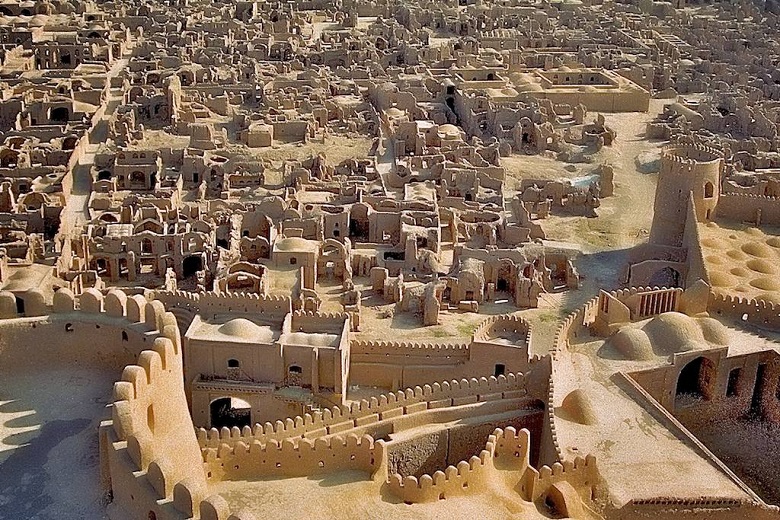Of course, “Eternal Bam” does not sound as proud and majestic as “Eternal Rome”. But, by its involvement with eternity, it can quite adequately compete with the capital of Italy. Bam was built two centuries earlier. And if the face of other cities is changing, then this city seems to pass by the time.
Civilizations are dying and re-emerging, landscapes are changing. Yet, only the unbreakable, harsh citadel on the top of the hill still meets the sunsets and sunrises.
The largest adobe building in the world
During the Achaemenid period, somewhere between 579 and 323 BC, the citadel of Bam was built in Persia (in the southeastern part of modern Iran). In Persian, it sounded like Arg-e-Bam and, in translation, meant “a huge fortress made of clay.” To this day, it is the largest adobe building in the entire world.
The fortress is located in the province of Kerman near the border with Pakistan. It consists of a fairly large fort and an inner citadel. Today this whole complex is called the Bam citadel.
The history of the eternal city
The fortress and city have flourished for centuries. It was one of the largest business centers on the Great Silk Road. It was here that all the most important trade routes crossed. Life was in full swing here.
The Parthians and Sassanids expanded the original construction of the Achaemenids. They built new walls and additional fortifications. In the 7th century, the region was conquered by the Arabs. In Islamic sources, information about this impregnable fortress begins to be found in the 10th century.
Arg-e Bam is a kind of “city within a city.” Archaeologists have discovered all the attributes of a comfortable life: bazaars, baths, residential buildings, arenas. Several ancient mausoleums and a cathedral mosque have survived to this day. All other inalienable attributes of Persian antiquity are also present here – the Badgiri wind towers, the Yakhcal ice towers, and the underground irrigation canals of the Kariz.
The invasion of the Turkic nomads and then the Mongols in the 12th century dealt a massive blow to the prosperity of Bam. The decline of the Great Silk Road, which began in the second half of the 14th century, also could not affect the fortress. The region revived somewhat for a short time under Tamerlane. Only now, not a trace remained of the former greatness.
The fortress remained inhabited all the time. Only at the beginning of the 20th century, when the construction of the new city of Bam began, it began to decline. Residents gradually moved in. First, they began to place a military garrison here. In 1932, the barracks were also empty, and the fortress was finally abandoned.
Great citadel
The fortress occupies an impressive area of almost 200 thousand square meters. It is surrounded by unapproachable seven-meter-high walls, forming a perimeter nearly two thousand meters long. Towers guard the only entrance to Arg-e-Bam. There are four hundred houses and various other structures inside. In the very center, there is a citadel building with barracks and the Palace of the Seasons.
There are almost seven dozen observation towers in the fortress. Everything was built using the same ancient technology. It used sun-dried clay bricks laid on layers of clay.
The impressive domed vaults of the fortress give it the appearance of a fairytale sandcastle.
The fortress could repel any attacks and withstand lengthy sieges. It had only one gate, and inside there were gardens, fields, wells, and irrigation canals. In such conditions, the citadel’s reputation for absolute inaccessibility is not surprising at all.
All buildings had unique structures, the so-called wind towers. They purified and conditioned the air by passing it through reservoirs. Thus, the rooms were always clean from dust, cooled and humidified air.
In 2003, an earthquake destroyed most of the buildings in Bam. This was one of the most brutal tragedies in Iran. More than two tens of thousands of people died. The citadel was also damaged. The most exciting thing is that those parts that were reconstructed suffered the most. Ancient buildings that have not been touched have remained almost intact.
The authorities began rebuilding the citadel of Bam immediately. Countries like Japan, Italy, and France got involved in the case. Today the fortress has been completely reconstructed. Although many buildings are now modern, they reproduce everything as it was in antiquity.
